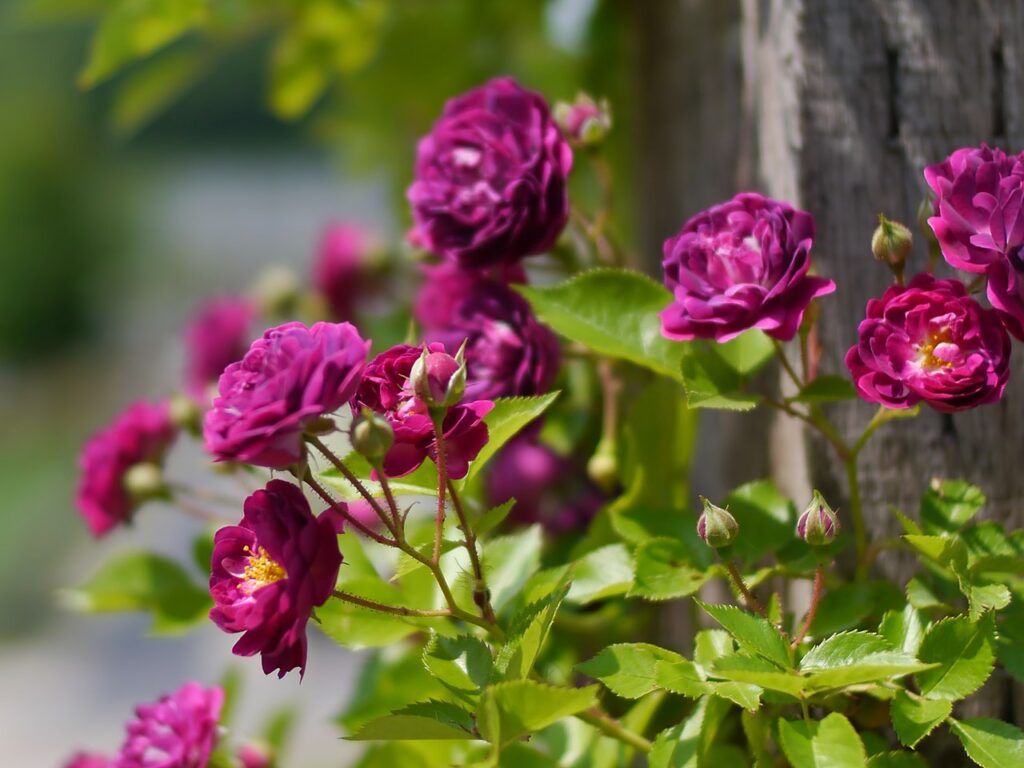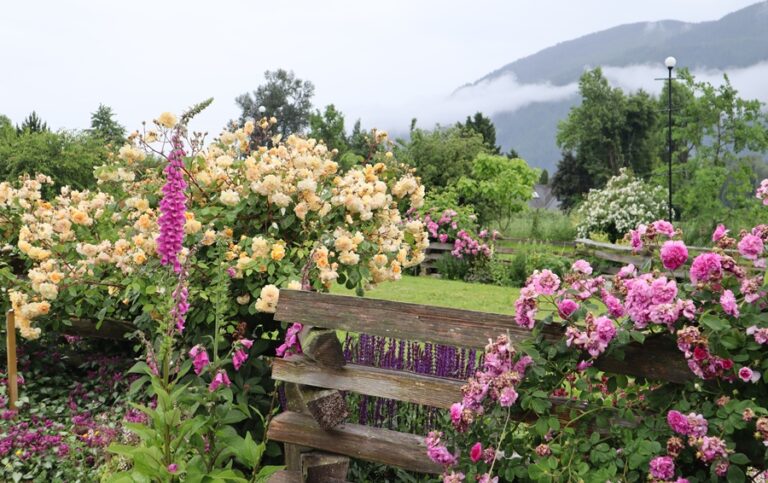When it comes to creating vertical interest and spectacular displays in the garden, climbing and rambling roses often top the list. However, the terms “climbers” and “ramblers” are frequently used interchangeably, leading to confusion among gardeners. In this article, well delve into the nuances of these two rose types, exploring their unique characteristics and what makes them so captivating.
Blooming Habits: The Core Difference
The primary distinction lies in how and when these roses bloom. Climbing roses, often referred to as modern climbers, are repeat bloomers. They begin flowering in late spring and can continue through summer and fall, as long as conditions allow. However, some climbing varieties may bloom less prolifically, depending on their parentage and environmental conditions.
In contrast, rambling roses typically bloom just once per year, usually in late spring or early summer. Their flowering period is short but breathtaking, producing a profusion of clustered blooms that resemble their wild rose relatives. While this generalization holds for most ramblers, certain varieties—particularly those with noisette lineage—may offer repeat blooming, blurring the lines between these categories.
Colors and Fragrance: Modern vs. Traditional Appeal
Modern climbing roses have access to a wider palette of colors thanks to their hybrid heritage. From vibrant oranges and deep reds to intricate blends and bicolors, climbers offer versatility that suits a variety of garden designs. Rambling roses, on the other hand, tend to display more natural tones like soft whites, pinks, and yellows. Exceptions exist, such as Bleu Magenta, a rambler with deep purple hues, which demonstrates that ramblers can also surprise with unique colors.

The allure of fragrance varies across both climbers and ramblers, making it essential to choose varieties based on individual traits rather than general assumptions. Ramblers like Albertine are celebrated for their powerful, heady scent that can fill an entire garden, while climbers such as Aloha offer a similarly rich and intoxicating fragrance. However, not all roses in these groups are fragrant, so it’s worth exploring specific varieties to ensure your selection matches your sensory expectations.
Size and Growth Habits: Finding the Perfect Fit
Climbing roses typically grow to heights of 8 to 15 feet, making them ideal for trellises, fences, and arbors. Their relatively manageable size allows for structured, elegant garden designs. Rambling roses, in contrast, are much more vigorous, with some varieties reaching up to 30 feet or more. These sprawling plants can effortlessly cover entire walls, fences, or even scramble into trees, creating a dramatic and naturalistic aesthetic.
This striking difference in size stems from their growth habits. Climbers are hybrids selectively bred for specific traits, such as repeat blooming and controlled growth. Ramblers, on the other hand, retain closer genetic ties to wild roses, contributing to their vigorous growth and adaptability. Species like Rosa multiflora and Rosa wichurana feature prominently in rambler parentage, explaining their exuberant, sprawling tendencies.
Hardiness
Ramblers generally have an edge in hardiness due to their strong connection to species roses such as Rosa multiflora and Rosa sempervirens. This heritage often grants them greater resistance to pests, diseases, and challenging growing conditions. Climbers, being more cultivated and hybridized, may require slightly more care but compensate with their extended bloom periods and a wider array of colors. That said, modern breeding has produced climbers with significantly improved hardiness and disease resistance, ensuring there’s a suitable option for nearly any garden setting.
Pruning and Training
Rambling roses thrive with minimal intervention, favoring a gentle approach to pruning. They bloom on mature wood—stems that are at least one season old—so cutting them back severely can significantly reduce flowering the following year. The ideal time to prune ramblers is immediately after their annual flush of flowers. This timing allows gardeners to shape the plant without sacrificing the next season’s blooms while maintaining its natural vigor and charm. Here’s what the RHS has to say about pruning ramblers.
Climbing roses, with their repeat blooming habit, can handle a more structured approach to pruning. Most gardeners choose to prune climbers in late winter or early spring, when the plant’s framework is fully visible. This is the best time to remove damaged, diseased, or crossing stems and shape the rose for the growing season ahead. While leaving a substantial portion of the main stems intact ensures strong growth, the lateral branches—those smaller, flowering offshoots—should be trimmed back to a node or two to encourage healthy, robust blooms.
Not Just a Class: The Versatility of Climbers
Climbing roses represent a growth habit rather than a distinct class, making them an extraordinarily diverse group. They can arise from many rose classes, including hybrid teas, floribundas, miniatures, and noisettes. Some climbing roses originate from natural mutations, or “sports,” where a shrub rose develops an unusually tall stem. These sports are propagated to create climbing versions of already beloved varieties, offering gardeners new ways to enjoy classic roses.
Many climbing roses, however, are the result of intentional breeding. These roses are specifically selected for their upright growth and ability to adorn arbors, trellises, and walls. Because they can emerge from a variety of rose classes, climbers are incredibly versatile and adaptable to different garden styles and preferences.
For instance:
- Laura Ford is a charming climbing miniature rose, combining small, delicate blooms with an upright habit.
- Leverkusen, a floribunda climber, dazzles with glossy foliage and vibrant flowers.
- Aloha (1949), originating from the hybrid tea class, features silvery pink petals and a strikingly intense fragrance.
This diversity ensures that climbers can cater to nearly every garden design, from formal structures to cottage-style settings.
Ramblers: A Nod to Wild Beauty
Ramblers, in contrast, are more tightly linked to their wild rose heritage, with genetics often tracing back to species roses. Their untamed growth and sprawling canes make them ideal for covering large areas or creating dramatic garden features. Unlike climbers, ramblers have a more consistent lineage, which lends them a unified aesthetic and robust nature.
Noteworthy examples of ramblers include:
- Bleu Magenta, a multiflora rambler with rich, velvety purple blooms that make a bold statement.
- Goldfinch, known for its cheerful yellow flowers, bringing a splash of sunshine to any garden.
- Albertine, a Rosa wichurana rambler, admired for its soft apricot-colored flowers and captivating fragrance.
These roses are well-suited to informal or naturalistic garden designs, where their vigorous growth and wild charm can be fully appreciated.

Some ramblers, like American Pillar, are celebrated for their pliable canes and adaptability, making them excellent for creative garden designs. Others, such as the golden-yellow Lady Banks’ Rose, are species roses cultivated over centuries for their exceptional form and charm.
Choosing Between Climbers and Ramblers
The choice between climbers and ramblers ultimately depends on your garden’s needs and your aesthetic preferences. Climbers provide consistent blooms and a modern look, while ramblers offer wild beauty and an unforgettable seasonal spectacle. Understanding these differences can help gardeners select the right rose to enhance their outdoor spaces.







